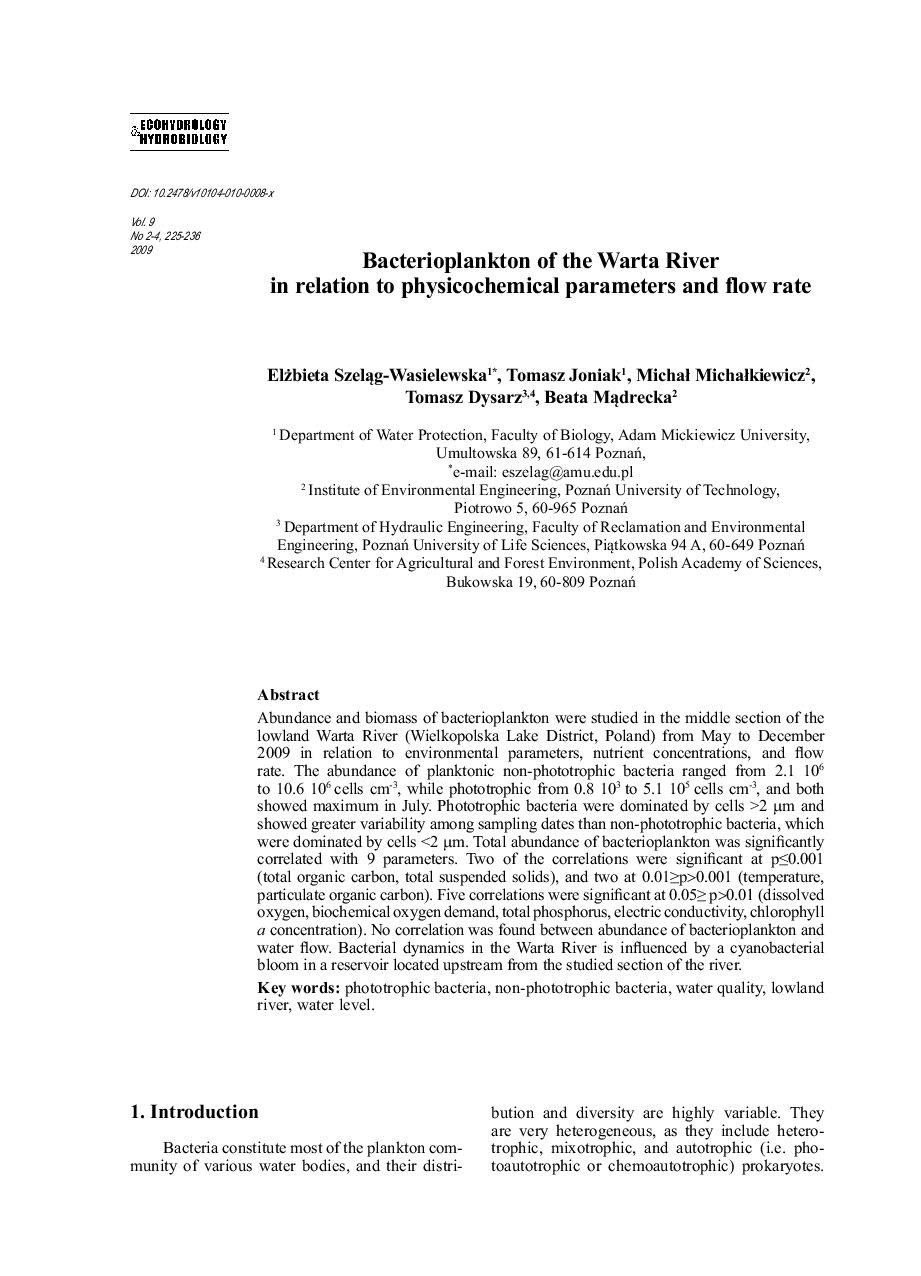| Article ID | Journal | Published Year | Pages | File Type |
|---|---|---|---|---|
| 4388206 | Ecohydrology & Hydrobiology | 2009 | 12 Pages |
Abundance and biomass of bacterioplankton were studied in the middle section of the lowland Warta River (Wielkopolska Lake District, Poland) from May to December 2009 in relation to environmental parameters, nutrient concentrations, and flow rate. The abundance of planktonic non-phototrophic bacteria ranged from 2.1 106 to 10.6 106 cells cm−3, while phototrophic from 0.8 103 to 5.1 105 cells cm−3, and both showed maximum in July. Phototrophic bacteria were dominated by cells >2 μm and showed greater variability among sampling dates than non-phototrophic bacteria, which were dominated by cells <2 μm. Total abundance of bacterioplankton was significantly correlated with 9 parameters. Two of the correlations were significant at p≤0.001 (total organic carbon, total suspended solids), and two at 0.01≥p>0.001 (temperature, particulate organic carbon). Five correlations were significant at 0.05≥ p>0.01 (dissolved oxygen, biochemical oxygen demand, total phosphorus, electric conductivity, chlorophyll a concentration). No correlation was found between abundance of bacterioplankton and water flow. Bacterial dynamics in the Warta River is influenced by a cyanobacterial bloom in a reservoir located upstream from the studied section of the river.
